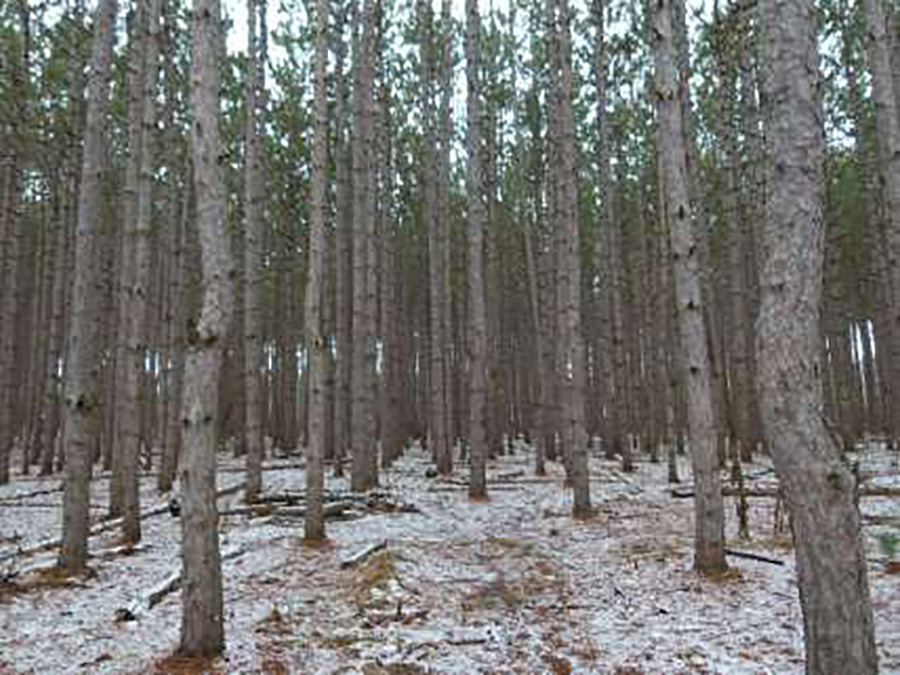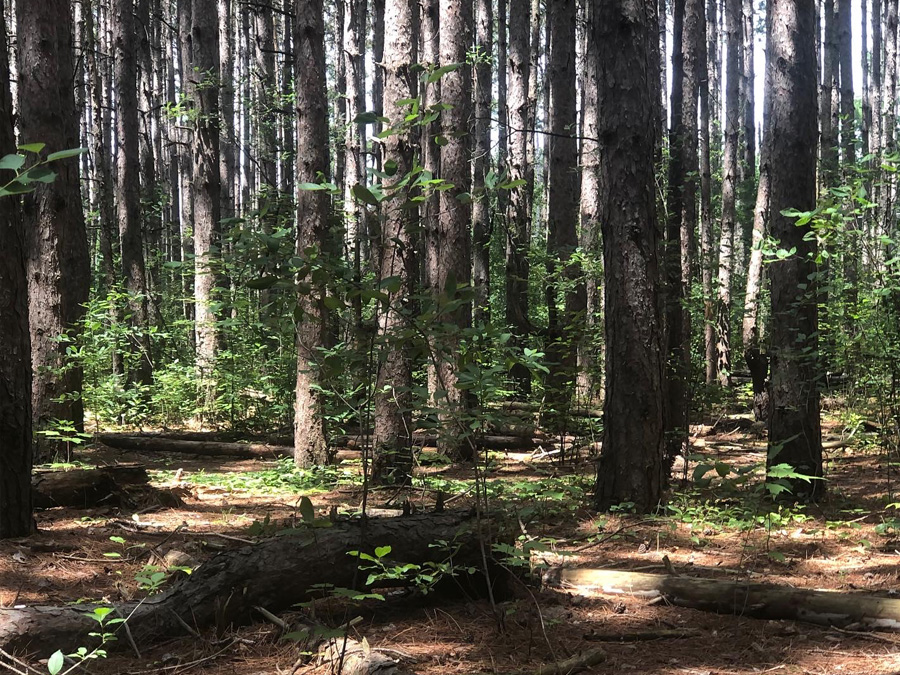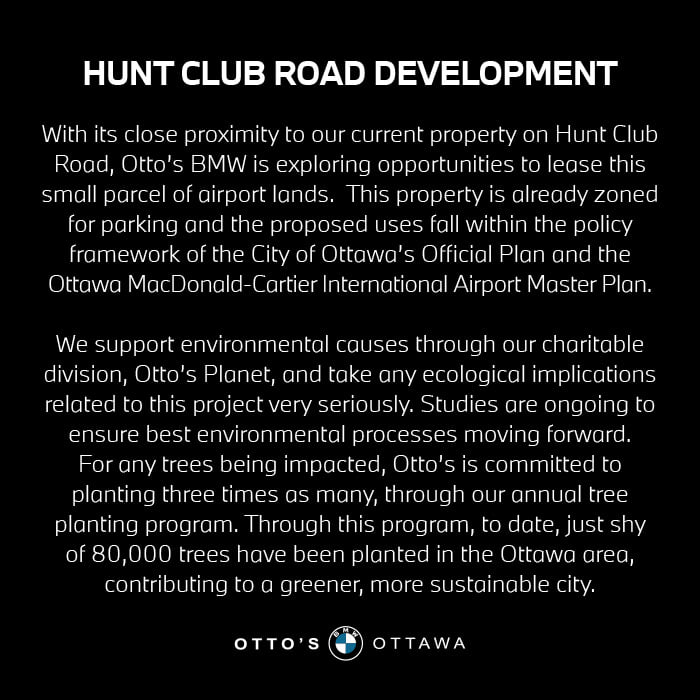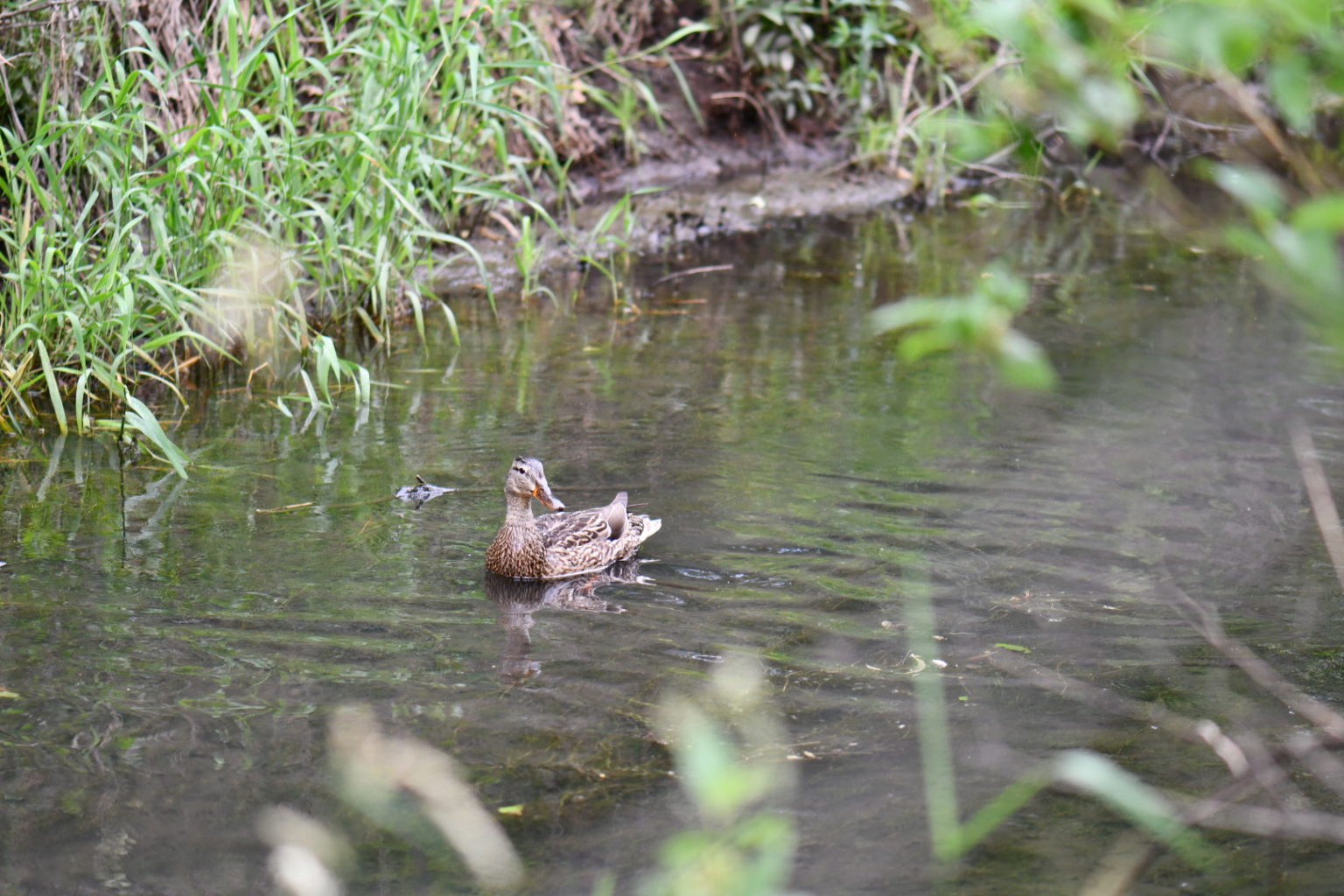The Hunt Club forest is an urban forest to be enjoyed by generations of residents to come, as it has been for the last half century.
The City of Ottawa declared a climate emergency. Cutting down healthy trees is in direct contradiction as red pines are an excellent sequester of carbon.
Application Details
The City of Ottawa has received two Zoning By-Law Amendment and Site Plan Control applications to develop the site at 400 Hunt Club Road with a storage yard and parking lot in two phases. The proposal includes a total of 79 parking spaces and 377 storage spaces on a total of approximately 1.57 hectares of leased land, which are to be used by Otto’s BMW Car dealership located at 600 Hunt Club Road.
The application and accompanying documents can be found on the City’s Development Application Search Tool.
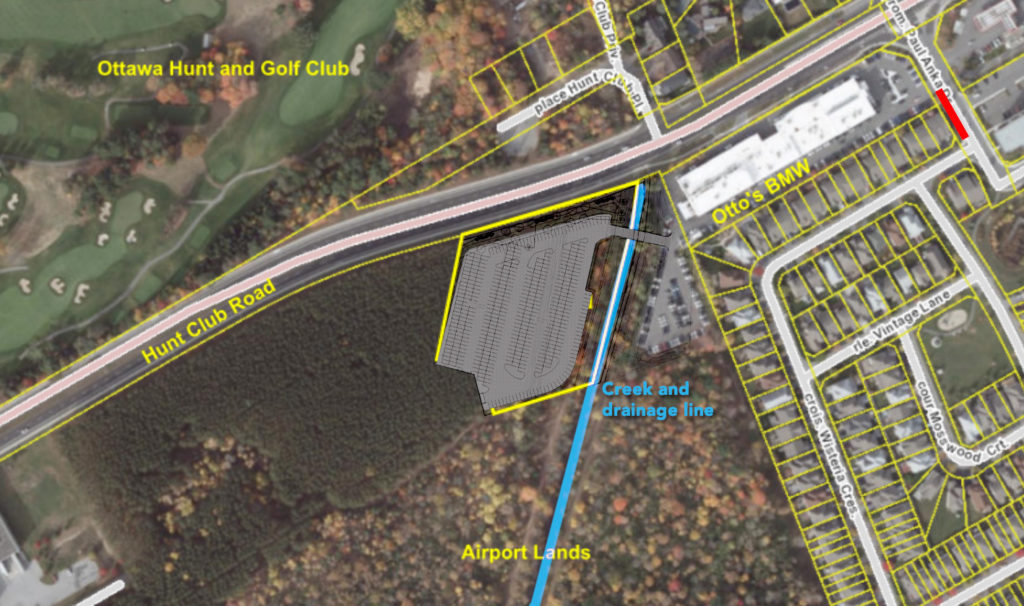
Does Not Benefit the Community from a Planning Standpoint
Currently this strip of Red Pine forest is zoned T1A for commercial use. A storage lot is not permitted, which is why Otto’s has submitted a request to rezone to an Air Transportation Facility Subzone A Urban Exception Zone which adds “storage yard” to the list of permitted uses.
The application is to change zoning to permit vehicle storage. As set out in section 3.6.5 of the Official Plan policies for Urban Employment Areas, industrial uses including large areas of outdoor storage are less desirable than those having negligible such impacts (e.g., offices or research and development facilities). Development on the south side of Hunt Club Road, being fully serviced, has already attracted many of the latter type of facilities. The proposed parking and storage fail to use and support the utility services already available. Nor does it bring the revenue and high-quality jobs of more desirable development.
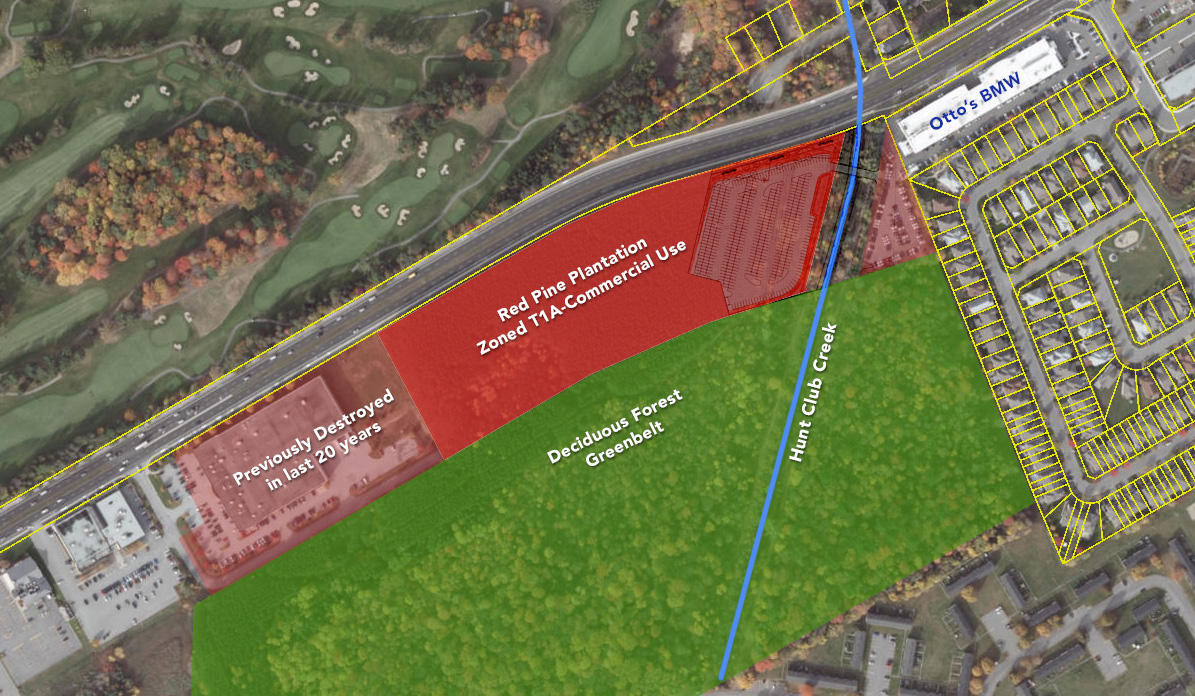
Recreation & Mental Health
For many members of our community the stand of trees is a significant amenity. Accessible on foot, it is a convenient place for recreation for all ages, supporting physical and mental well-being.
According to the 2018 Ottawa Airport Master Plan the subject property was not to be developed until 2038. Residents had a reasonable expectation that they would be able to continue to enjoy use of their federal land for many more years.
The NCC Capital Urban Lands Plan and Parkways Policy Review: Public Consultation Report had 85% agreeing with the direction “contact with nature/conserve urban natural areas, enhance existing landscapes and provide for public recreation uses in keeping with the site carrying capacity.” That was the highest support for any direction proposed. It was noted that “Many expressed the need to maintain and preserve the existing green space in the capital.”
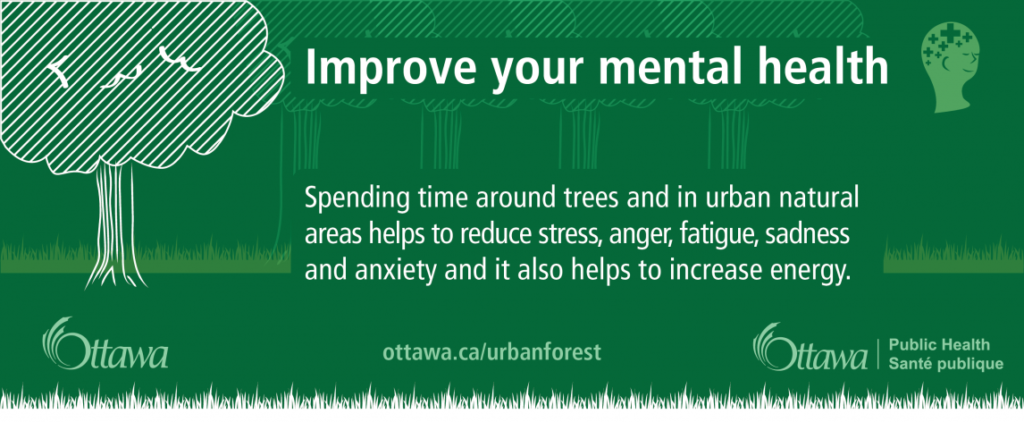
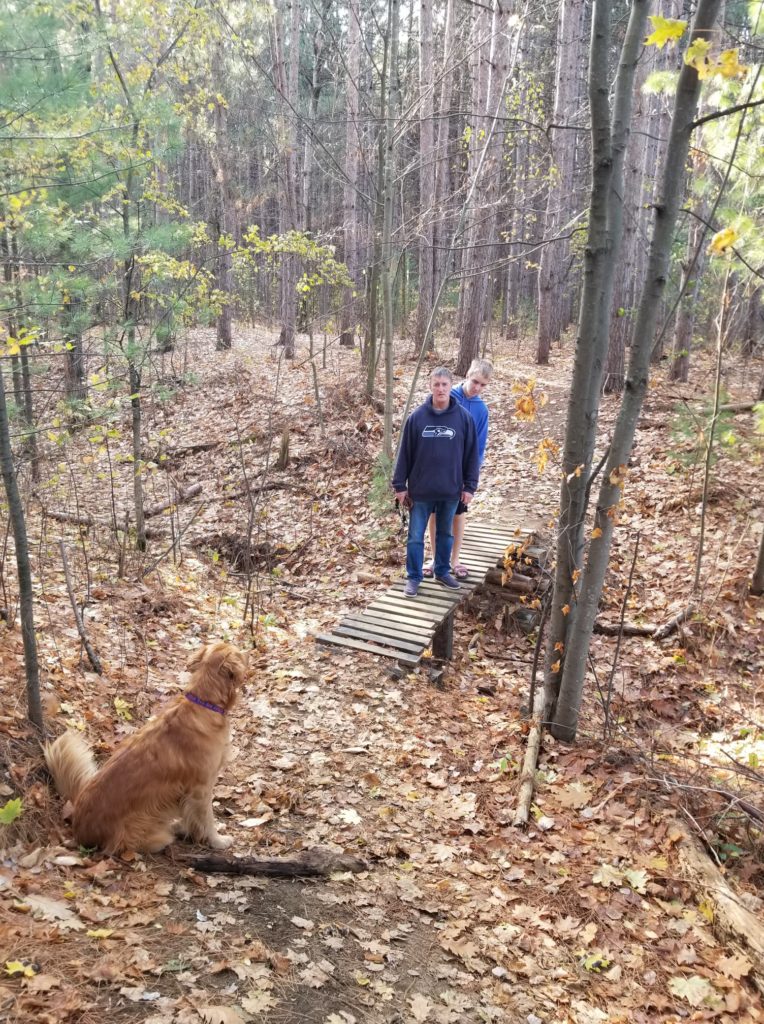
Environmental Impacts & Climate Change
Two years ago, the City of Ottawa declared a climate emergency. Over the last few months we have seen how our world is very quickly hurtling towards a climate crisis and a biodiversity crisis. We ask the city that all future development applications and zoning amendments be viewed under a climate and biodiversity lens. When using such a frame of reference, this proposed development would fail on both aspects.
Our city needs to be building solutions that will mitigate climate change and biodiversity loss, not accelerate these changes. Our city needs to be encouraging the use of sustainable transportation, for residents and employees, It is ironic then, to approve a development that wants to build more parking spaces for their employees. As well, the city needs to support developments and industries that will decrease our fossil fuel emissions, not expand them.
Planting Trees vs Preservation
Otto’s BMW responded to the community through a statement that says it is committed to planting three times as many trees for every tree cut. This appears to be through a charitable division called Otto’s Planet, supporting the Scouts’ and their tree planting program.
Although planting trees is part of a climate change mitigation solution, the benefits will never compare to preserving the state of the forest. Trees will definitely help us slow climate change, but they won’t reverse it on their own. In a 2017 study, researchers estimated the full potential of “natural climate solutions”. The results were preserving existing forests and reforesting degraded areas. As Earth continues this rate of deforestation, the climate will change more significantly. Warmer climate conditions are creating difficult growing conditions for new forest ecosystems. Additionally, these newly planted trees will not absorb nearly enough greenhouse gases for 2 decades or more. Meanwhile, deforestation continues to remove more trees each year.
…it becomes much more difficult for a reforested area to have its species range and diversity, and the same efficiency to absorb atmospheric carbon.
Sassan Saatchi, NASA’s Jet Propulsion Laboratory
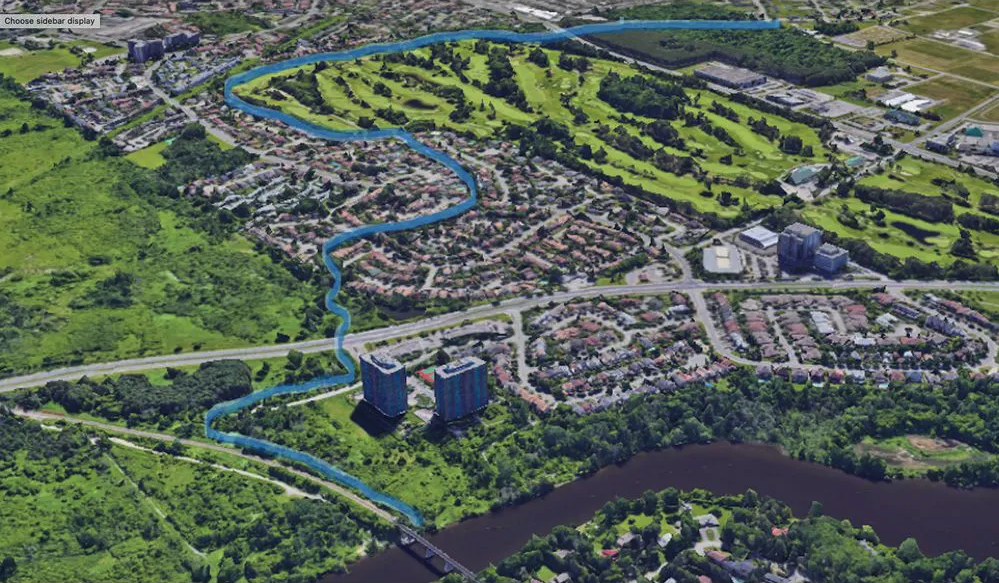
Hunt Club Creek
The creek runs alongside the forest, from the south, and flows NW into the Rideau River. These waterways are critical to the Rideau River watershed. If Otto’s builds a bridge to cross the creek, it will not only disturb the natural habitat observed, but poses additional risk of pollution, as the car carrier trucks and cars cross it more often. The culverts by Otto’s that exist have also not been well maintained in the past. This portion of the Hunt Club Creek requires more improvement to its health—not additional risks.
Specific issues with the Environmental Report
We are disappointed in the environmental assessment that was conducted by McKinley Environmental Solutions, dated May 2021. In the executive summary, they state,
The Red Pine Plantation is not considered an ecologically significant feature, and therefore the tree clearing associated with the proposed development is not anticipated to result in significant negative impacts to the natural features and functions of the Site.
Again, in the middle of a climate emergency, any forest (whether it is a plantation or a naturally occurring one), is ecologically significant. It is significant due to its carbon sequestration capacity in its soil and in the trees themselves, it is significant in the biodiversity it provides (regardless of whether that biodiversity consists of “common” species – we are losing ALL species at an alarming rate and need to vehemently protect habitat). It is obvious that clearing almost 4 acres of trees will negative impact the wildlife that use that forest as it’s habitat (birds, insects, etc) and the living trees and plants that thrive on that land. The interpretation of clear cutting a forest as not having a “significant negative impact”, is not in line with a world that desperately trying to protect and plant trees as part of a global climate solution.
2.0.1 Vegetation Survey and Tree Inventory Methodology (TCR) and 3.3 Vegetation Communities (TCR)
While the company states that ground cover was previously assessed during a site visit in June 18th, the inventory of plants completed by Dr. McKinley on December 3rd, 2020. It is not clear how plants that are not “ground cover” could have been accurately surveyed in December (since the report lists that ground cover was primarily dense mat of pine needles and has little to say about any other plants that were present). We know from our own walks and with a guided tour by Tree Educator, Owen Clarkin, that other plants grow and thrive in this forest. Contrast McKinley’s Photograph 4 taken in December, with the recent photos residents took.
